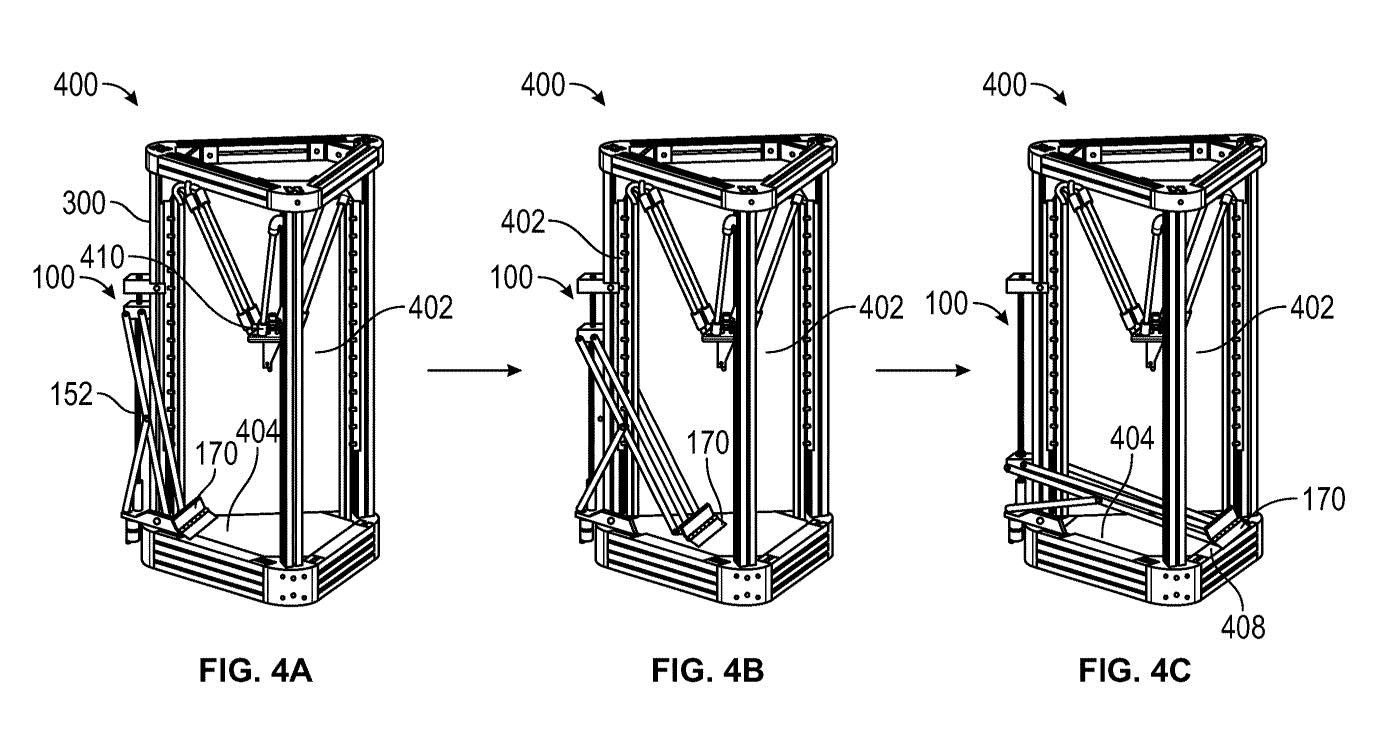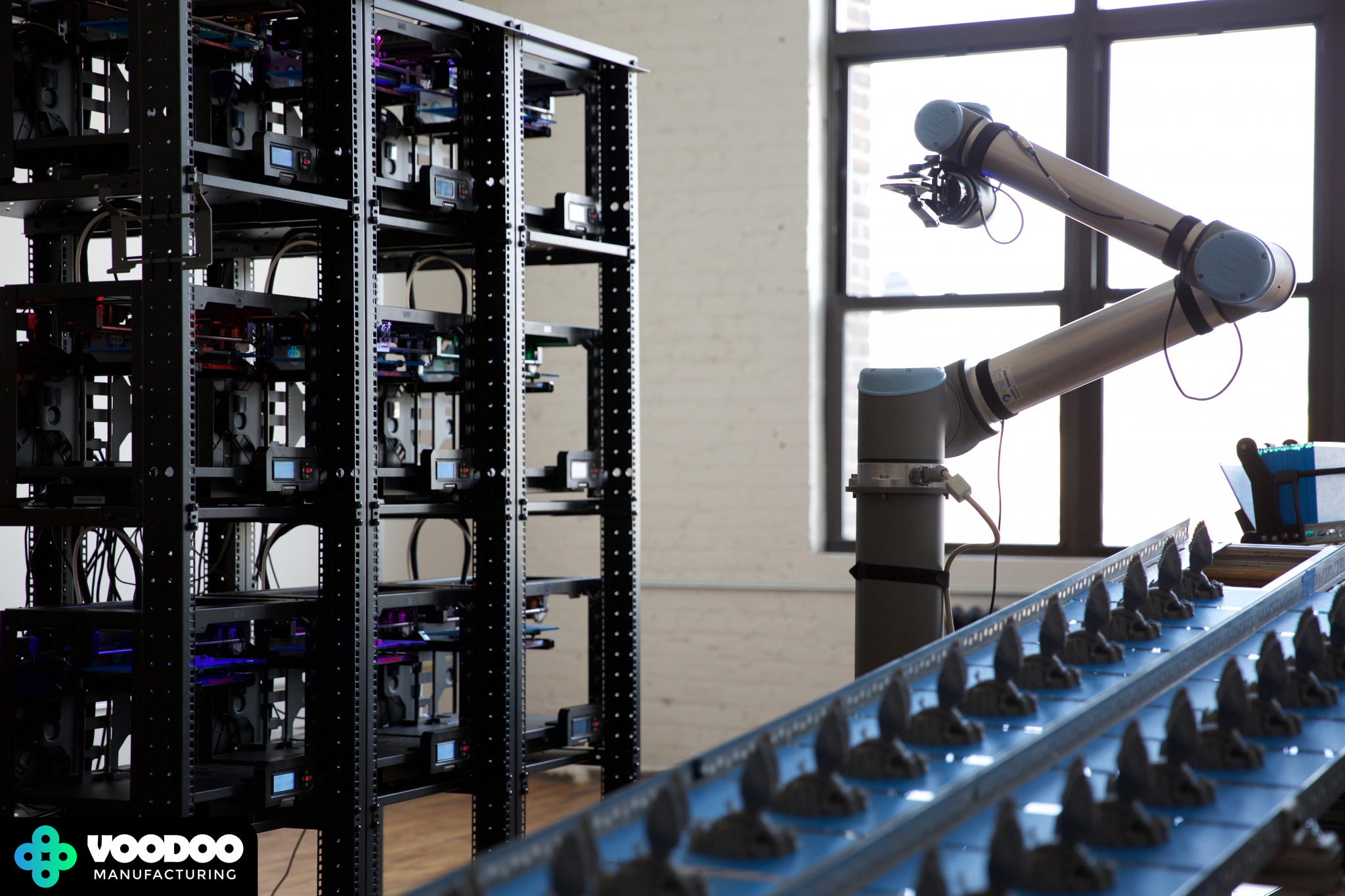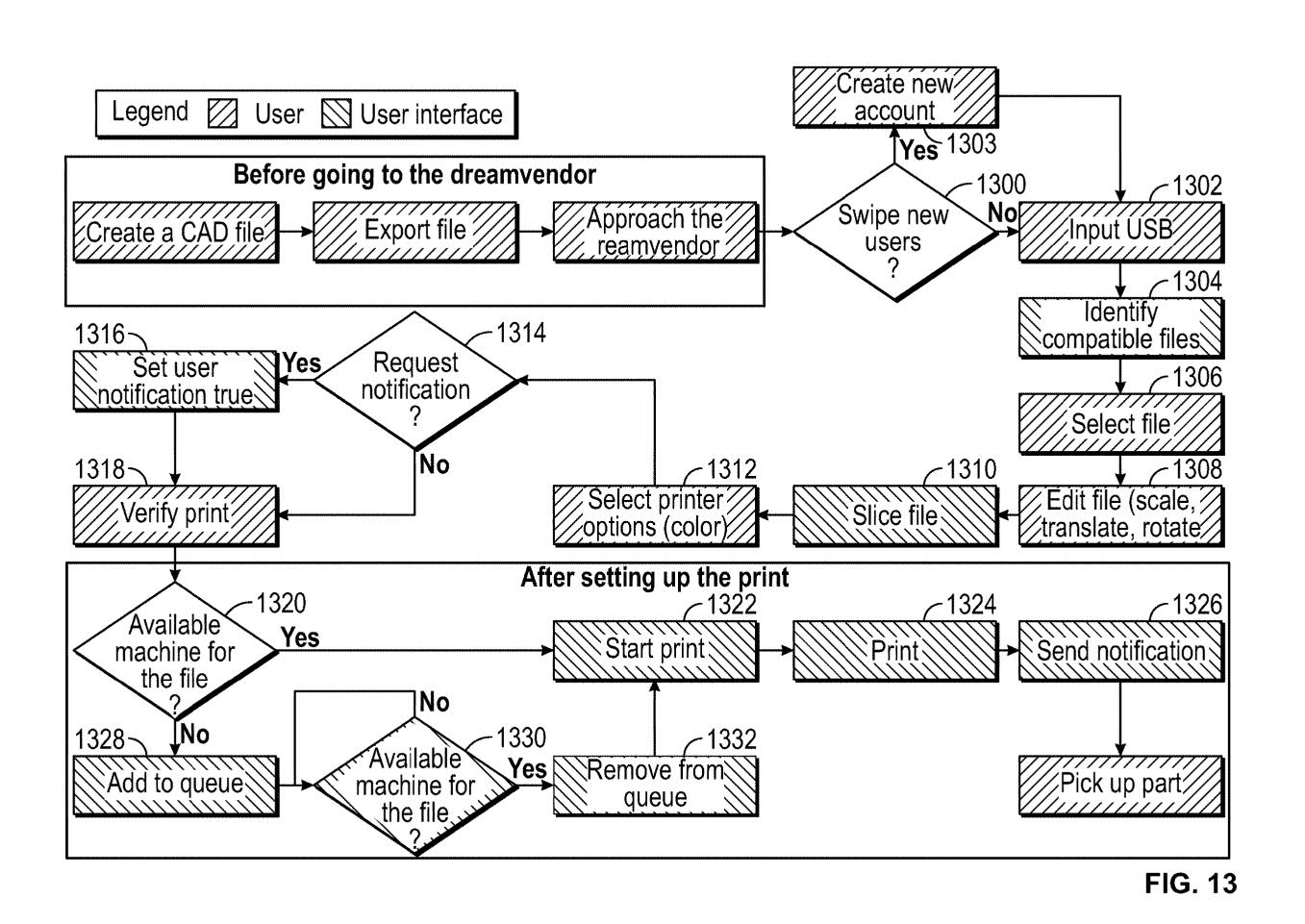Kevin D. Kline, an inventor at Virginia Tech, has been granted a patent for a “3D printing vending machine” which can be used for continuous manufacturing.
According to the patent document “In one embodiment, the present invention relates to assemblies that automatically remove printed components to permit the continuous and automatic manufacturing of additional components.”
The document is published under the title ‘3D printing part removal and interface for a 3D printing vending machine‘ assigned to the university’s IP asset manager Virginia Tech Intellectual Properties, Inc.

3D printing 24/7
In the pursuit of 3D printing for production, many OEMs are looking at ways to makes these machines “continuous.” The main thing that prevents this process is a 3D printer’s design as they process just one task at a time. When a job finishes the 3D printed model remains stuck to the bed. The next task can only begin if the previous part has been removed.
One of the methods of overcoming this challenge is to introduce a conveyor belt to the 3D printer. Leading OEM Stratasys demonstrated such a system in its Continous Build machine, previewed at RAPID + TCT 2017. On behalf of Chinese 3D printer manufacturer Tiertime also introduces this ability to the desktop through its X5 machine.
Adding a robotic arm to the mix, New York 3D printing service bureau Voodoo Manufacturing enabled built plate transfer through Project Skywalker.
Kline’s newly patented technology, on the other hand, uses a combination of hardware and software to enable 24/7 3D printing.

Virginia Tech’s 3D printing vending machine
The newly patented technique from Virginia Tech is based on an FDM/FFF Delta system. On one corner of the conventional three-post Delta gantry Kline adds another sweeping mechanism – this addition is known as the ejection mechanism. The ejection mechanism consists of a robotic arm with a scraper attached to it, which prizes and pushes the completed print out of the machine into a basket.
In further efforts to boost productivity, the 3D printer is part of a modular system, whose components, “may be grouped together in various configurations that maximize the forward or user presenting areas.” In other words, multiple 3D printers can be daisy-chained together and operate simultaneously.
On the software side, the 3D printer is configured by a User Interface capable of managing multiple printers and tasks. The ‘dashboard’ or the idle screen of the UI, which uses a user identification system, lets the operator identify a 3D printer and send printing tasks to a specific machine.
Once a print file is selected the user can see the live preview of the model powered by Helix 3D toolkit, an open source 3D library. The model is sliced by the open-source Slic3r and sent for printing.

For more of the latest 3D printer IP subscribe to our newsletter. Also join us on Facebook and Twitter. There are a number of new career opportunities currently available in additive manufacturing, visit our 3D Printing Jobs page to find out more.
Featured image shows drawings of the 3D printing vending machine. Image via Virginia Tech.

